- Victorian Mourning Jewellery
- Real Human Skull Medical Specimen
- 1930s Theatrical Clown Costume
- Antique Prosthetic Eye
- Medical Scarificator for Bloodletting
- Victorian 1885 Samples of Diseased Organs
We come across fascinating treasures from every corner of history, but some items stand out as particularly eerie, each with its own rich backstory, ranging from Victorian mourning jewellery to real human skulls. Whether you're a fan of history, a lover of the macabre, or simply enjoy a spine-tingling Halloween read, these items offer a glimpse into darker corners of the past. In this blog, we delve deeper into these spooky and fascinating finds from customer boxes, with a little help from our vintage experts and historical facts.
Victorian Mourning Jewellery
The vintage brooches pictured below can make a perfect addition to any Halloween outfit, as their dark, elegant aesthetic evokes the mystery and allure of the Victorian era. The sombre tones, intricate designs, and symbolic motifs like spiders and moths seamlessly fit with the spooky atmosphere of the season. Wearing or displaying these pieces during Halloween adds a touch of historical eeriness and gothic charm to your celebration, making them ideal accessories for those who appreciate a blend of fashion and the macabre.
Made from materials like jet, onyx, and vulcanite, mourning jewellery pieces were worn by women during mourning periods to symbolise grief in the Victorian era. The black cameo brooch, floral pins, and intricate designs are typical of these sentimental items, often worn for months or even years after a loved one’s passing. Victorian mourning practices were influenced by Queen Victoria herself, who, after the death of Prince Albert in 1861, wore black for the rest of her life. Mourning jewellery became a way for people to display their grief publicly while adhering to strict mourning dress codes.
These pieces were often personalised with the hair of the deceased, a practice known as "mourning hair art." Hair was braided, woven, or encased in lockets to be worn close to the heart. The pieces are intricate works of art, made during a time when people viewed death as a natural, albeit sorrowful, part of life. Today, these items are highly collectable for their craftsmanship and historical significance.
Real Human Skull Medical Specimen
Nothing screams Halloween like a skull - this particular skull, used as a medical specimen, features a removable top, indicating its use in anatomical studies. Skulls like this were once common in medical schools and were used for teaching students about the human body. In the 18th and 19th centuries, cadaver dissection and the use of real bones were essential in medical education.
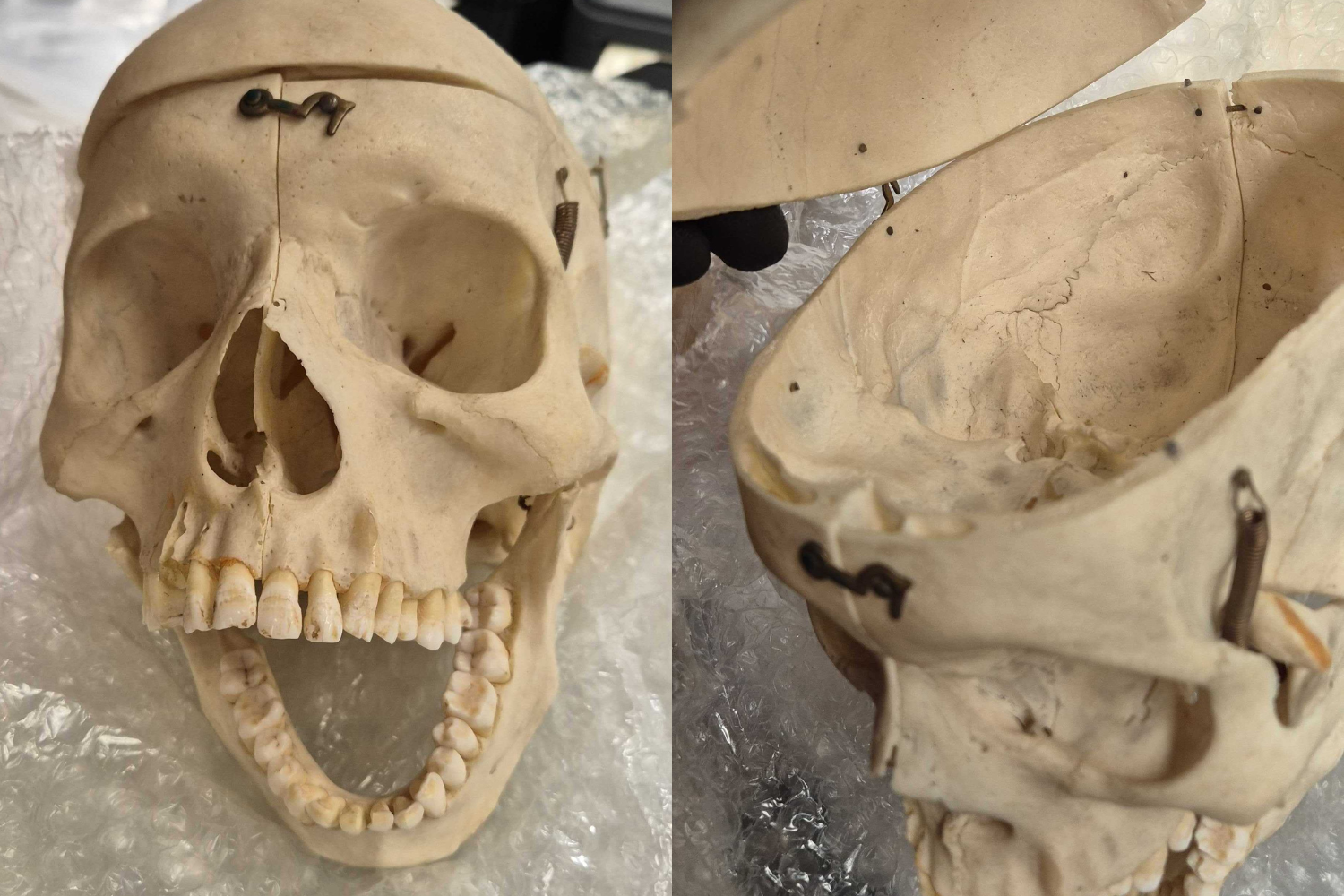
By the late 19th century, the introduction of wax and plaster models meant that fewer human remains were used in medical schools, making real skulls rare finds today. Anatomical models made from real human skulls were invaluable teaching tools before synthetic models became widely available. Skulls used for these purposes often came from medical cadavers, though the source of bones during certain periods was ethically dubious, with some bodies procured through grave robbing or executed criminals.
1930s Theatrical Clown Costume
This 1930s harlequin-style clown costume with its bold red, green, and yellow diamonds is both striking and unsettling. Harlequin costumes like this one trace their origins to the Commedia dell'Arte, a form of theatre that began in Italy in the 16th century. The Harlequin was a mischievous character, often playing tricks and getting into trouble. By the early 20th century, clowns became staples of circuses and vaudeville performances, entertaining audiences with slapstick comedy. Vintage clown costumes, especially from the 1930s, are fascinating collectables because they reflect a time when live performances were a primary form of entertainment, long before television or film became dominant.”
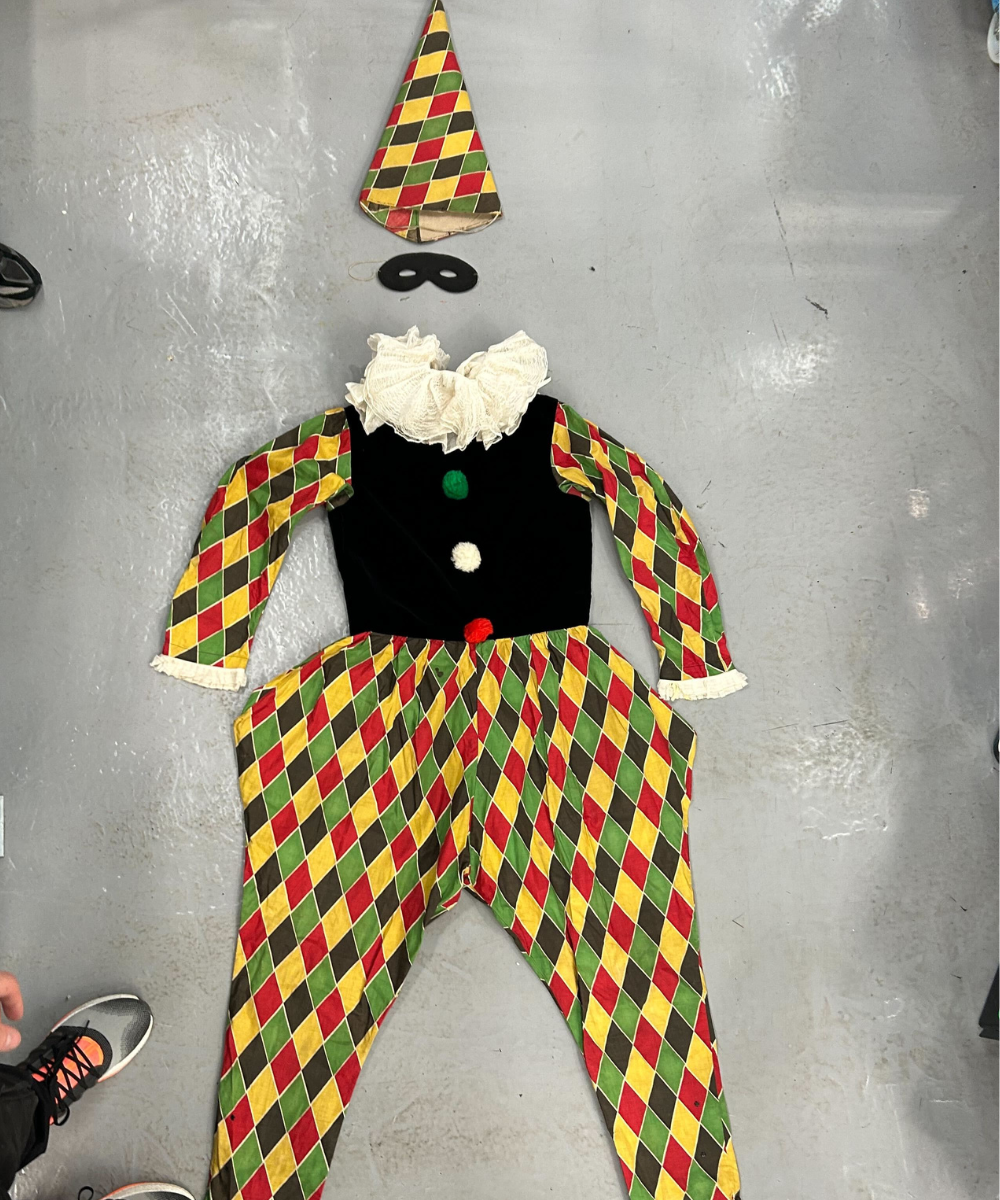
Interesting Fact: The unsettling nature of clowns in modern times is often linked to the phenomenon of coulrophobia - a fear of clowns. This fear became more widespread following films like It and Poltergeist, where clowns took on more menacing roles.
Antique Prosthetic Eye
Made from glass, antique prosthetic eyes were painstakingly hand-painted to match the wearer's natural eye. Glass prosthetic eyes became common in the early 19th century and were revolutionary for their time. While glass was the primary material for early prosthetic eyes, it was eventually replaced by acrylic in the mid-20th century due to its durability and lighter weight. Each eye was custom-made for the wearer, with skilled artisans blowing and shaping the glass before painting it to resemble a real eye.
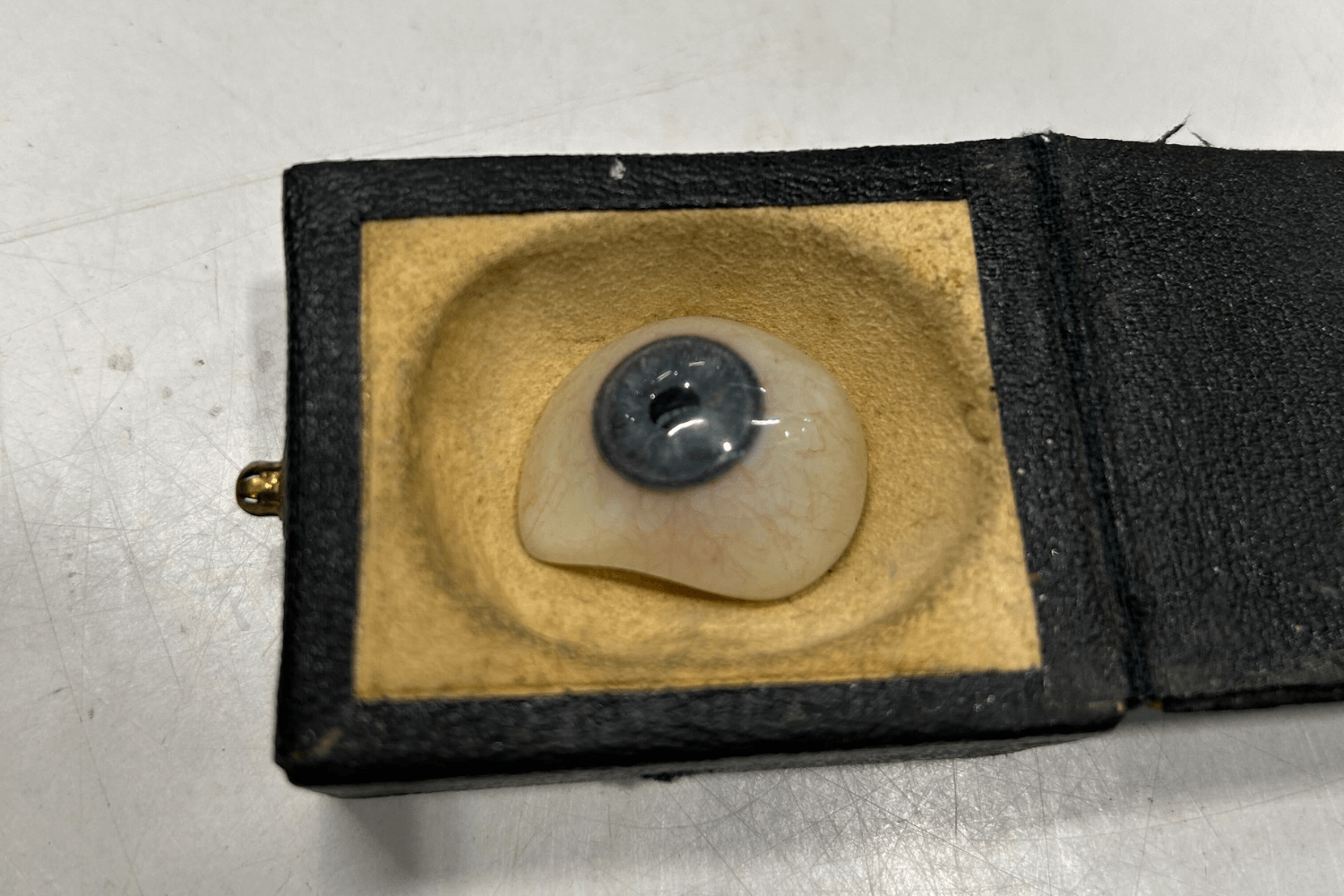
Prosthetics like these helped restore confidence for those who had lost an eye due to injury or illness. In this particular piece, the attention to detail was extraordinary. Many of the early examples, especially from the 19th century, are now sought after by collectors for their beauty and craftsmanship.
Medical Scarificator for Bloodletting
This scarificator, a small device used for bloodletting, might send a shiver down your spine. The device houses several blades which would make tiny incisions in the skin to let blood flow -once thought to cure a variety of ailments. They seem barbaric by today’s standards, but at the time, they were cutting-edge medical technology. Bloodletting was so popular at one point in history, that George Washington reportedly underwent the treatment multiple times on his deathbed in 1799, with some historians believing it may have contributed to his death.
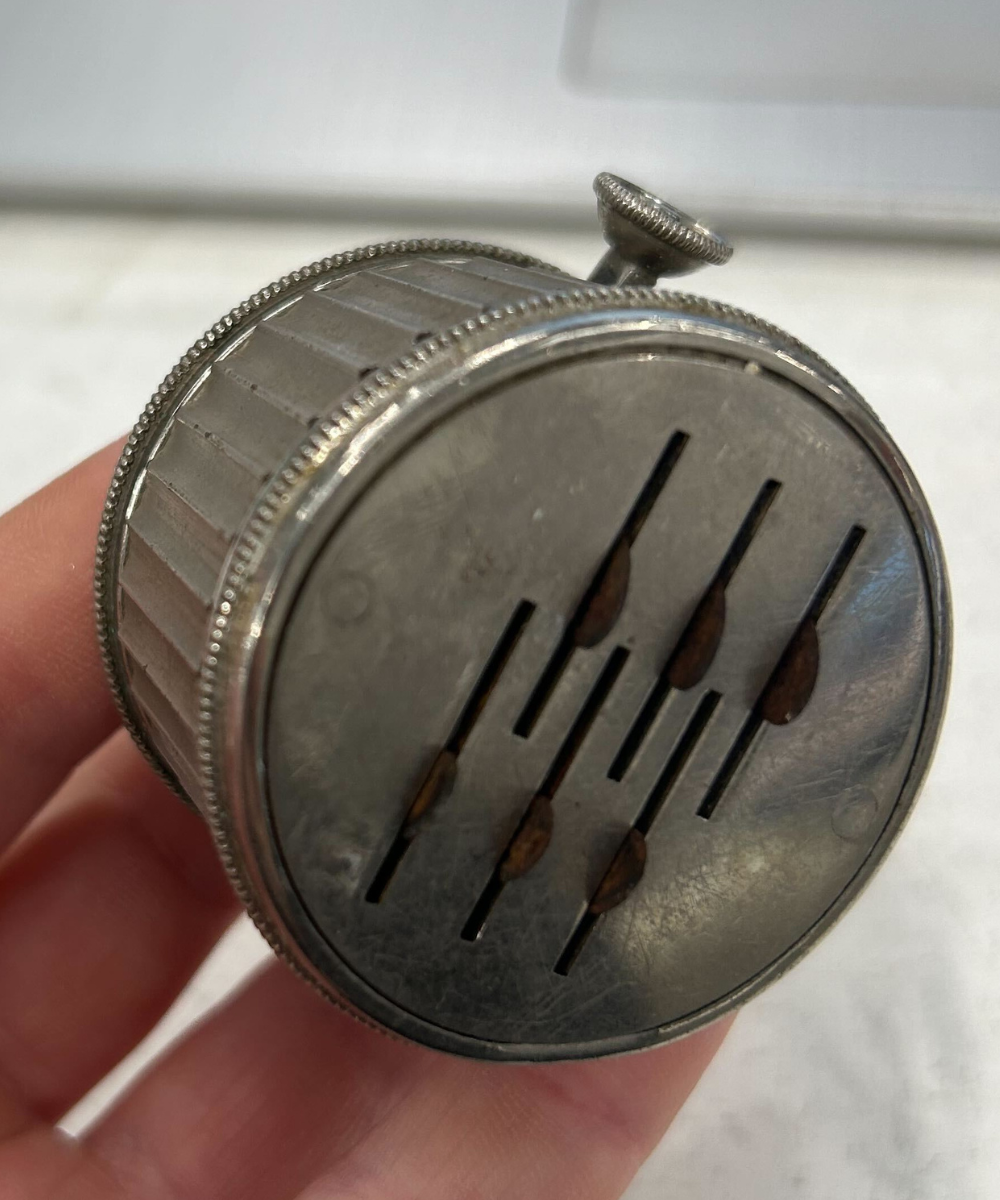
Bloodletting dates back to ancient Greece, where it was believed that illness was caused by an imbalance of the body's four humours: blood, phlegm, black bile, and yellow bile. Scarificators like this were introduced in the 18th century to make bloodletting faster and more efficient. While the practice was largely discredited by the 19th century, it remained a popular treatment for centuries.
Victorian 1885 Samples of Diseased Organs
The glass slides in the image contain samples of diseased organs from 1885, meticulously preserved for study. These Victorian-era pathology slides were used to educate medical students on the effects of various diseases. The Victorian era saw huge advances in the understanding of pathology and disease. With the invention of the microscope, scientists and doctors were able to study tissues and cells in ways that were previously impossible.
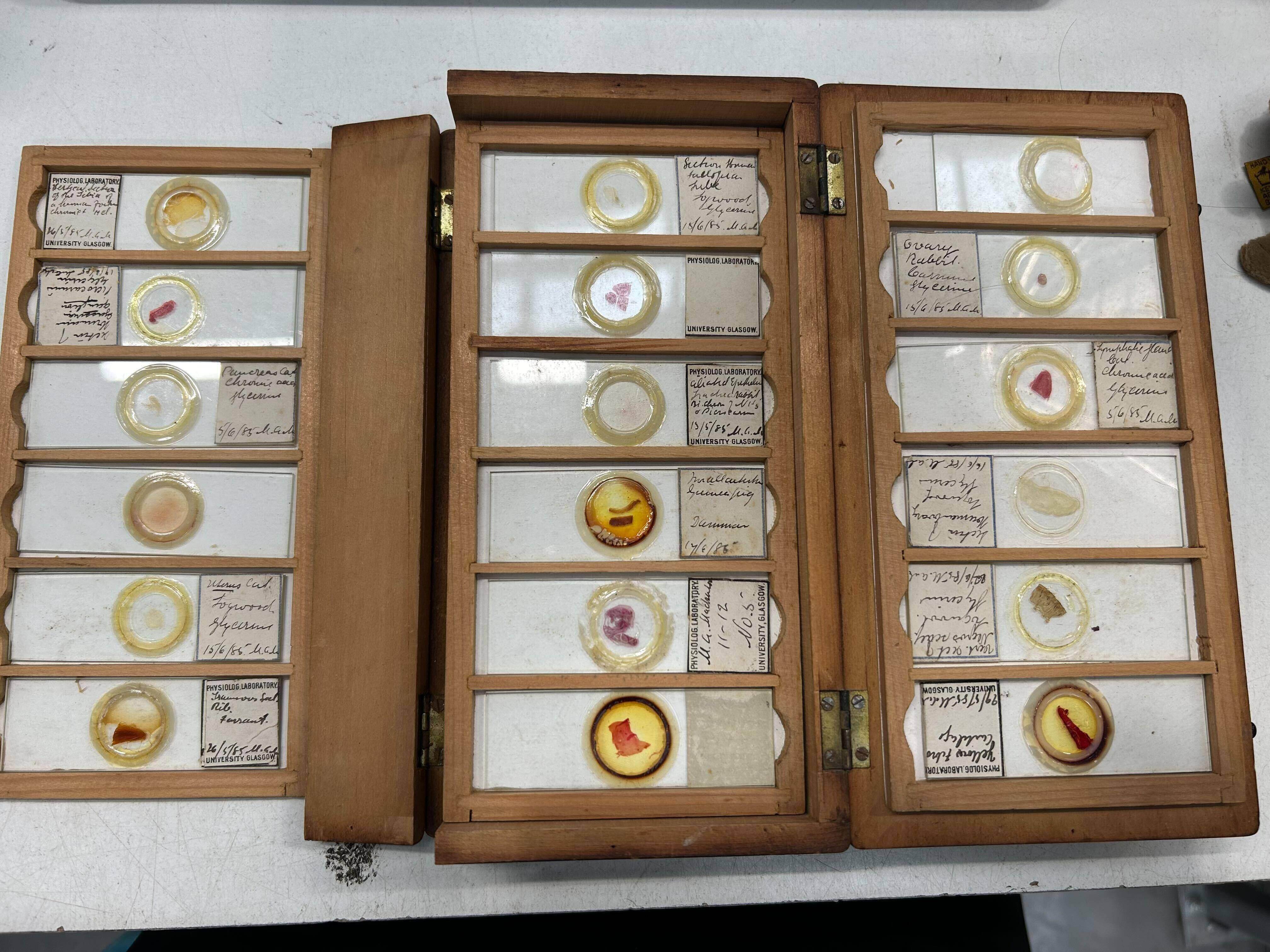
These slides, with handwritten labels, showcase various conditions, offering a rare glimpse into the medical research of the time. Victorian pathology slides are incredibly rare and valuable to medical historians. Each slide tells a story of a specific disease and how it was understood during a time when modern medicine was in its infancy. Many pathology slides from the Victorian era were made by hand and included detailed notes on the disease, the patient, and often, the outcome.
From the intricate details of Victorian mourning jewellery to the eerie presence of a real human skull once used for medical teaching, each item carries a haunting narrative that brings history to life in a chillingly tangible way. At Vintage Cash Cow, our experts love receiving spooky finds all year round -whether it's an antique medical instrument, vintage mourning jewellery, or something as eerie as a real human skull, we're always excited to delve into the unique history of these items. If you have any antiques gathering dust - spooky or not -don't let them sit forgotten. Our team is here to help you unlock the hidden value in all your vintage items, no matter how strange or unusual.

